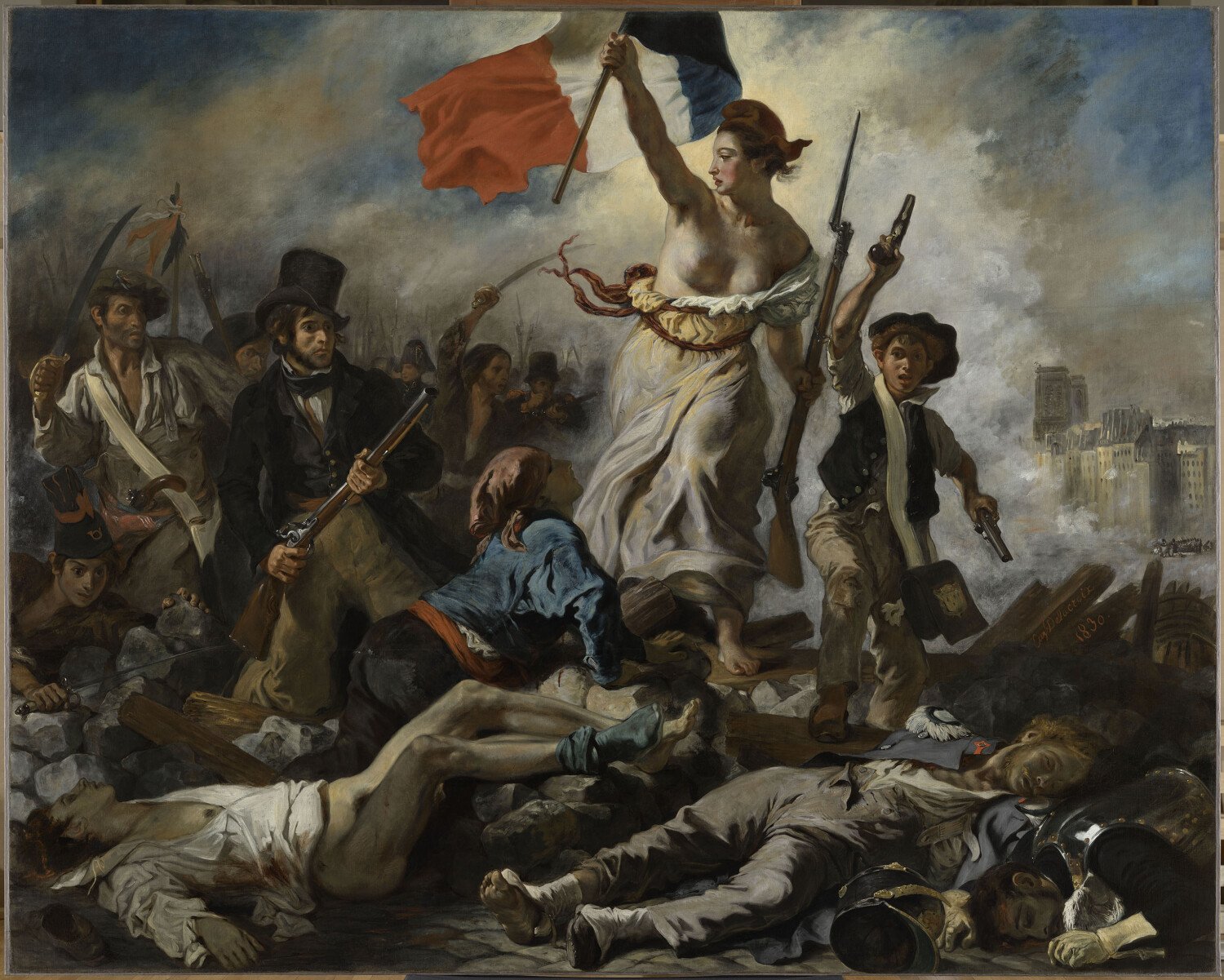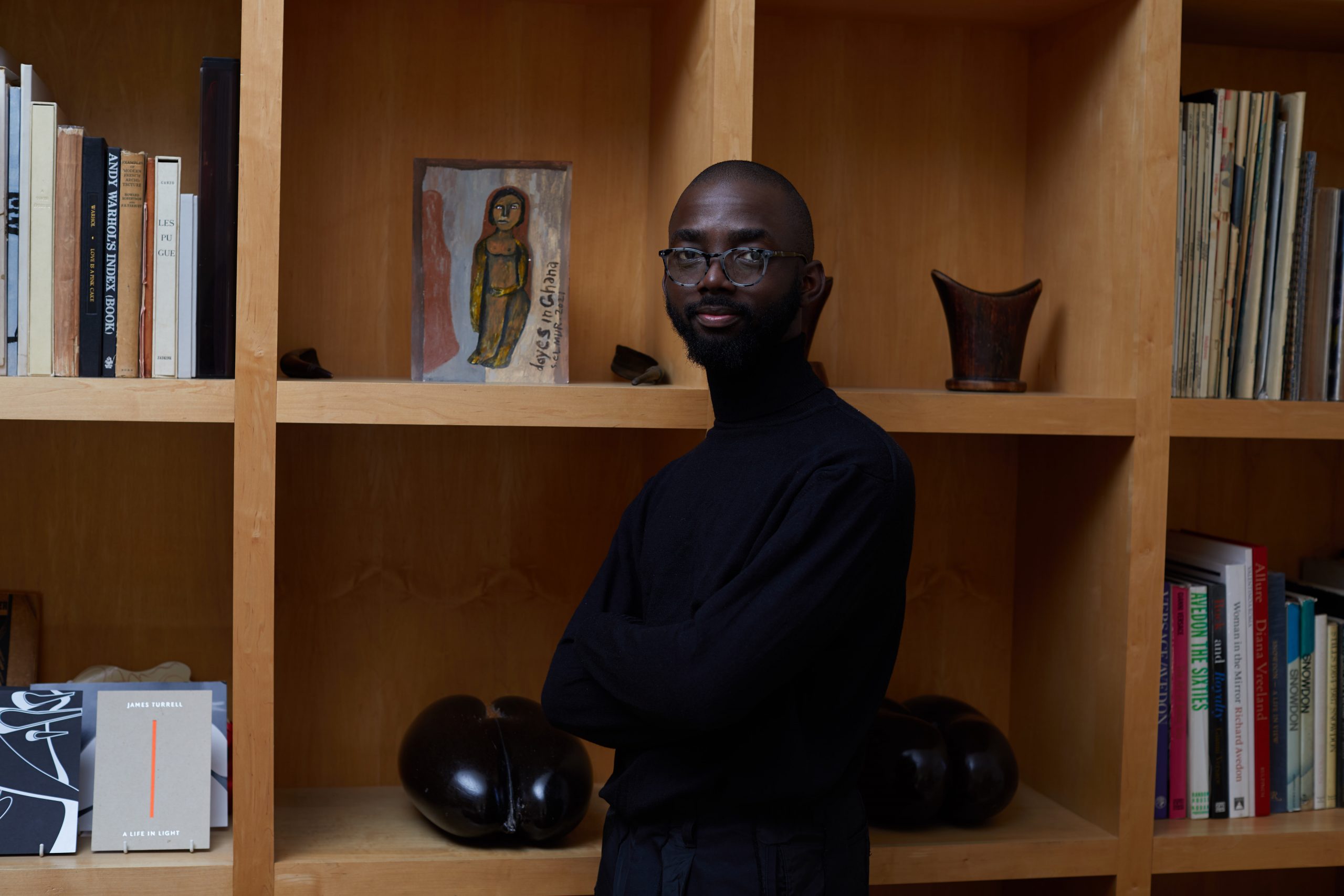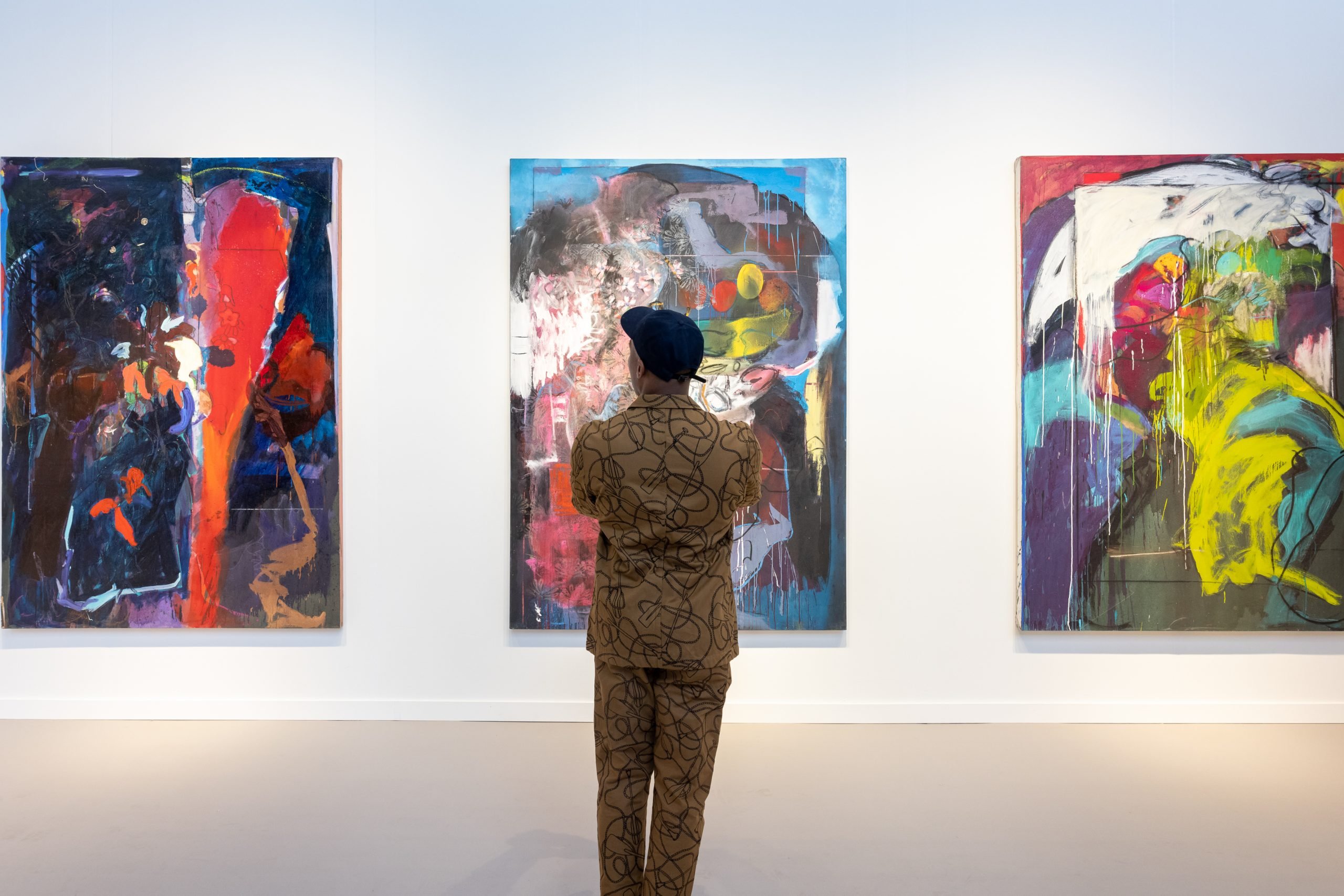Art World
A Portrait Controversially Attributed to Raphael Goes on View in France
The work's debated authentication has not stopped a flow of visitors to the Saint-Maximin-la-Sainte-Baume basilica.
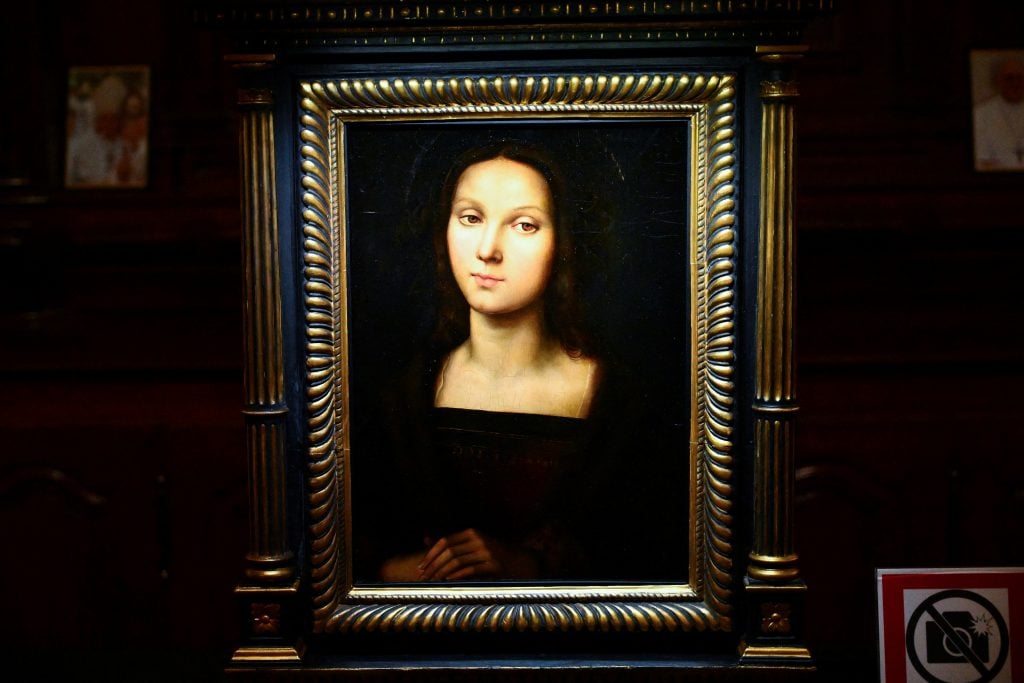
On Sunday April 21, around 50 keen viewers queued up outside Saint-Maximin-la-Sainte-Baume basilica in the south of France in order to see a painting of Mary Magdalene, said to be by the hand of Raphael.
The 18-by-13 inch painting was purchased last year from a London auction house by an anonymous French collector, who spent $37,000 on the work which was said at the time to have been made in the workshop of Leonardo da Vinci. In September 2023, Annalisa Di Maria, a UNESCO expert in Renaissance art and Florentine Neoplatonism, controversially authenticated the work, using infrared analysis to attribute the painting to the Renaissance master Raphael. The painting has been dated to 1505, when Raphael met the polymath Leonardo.
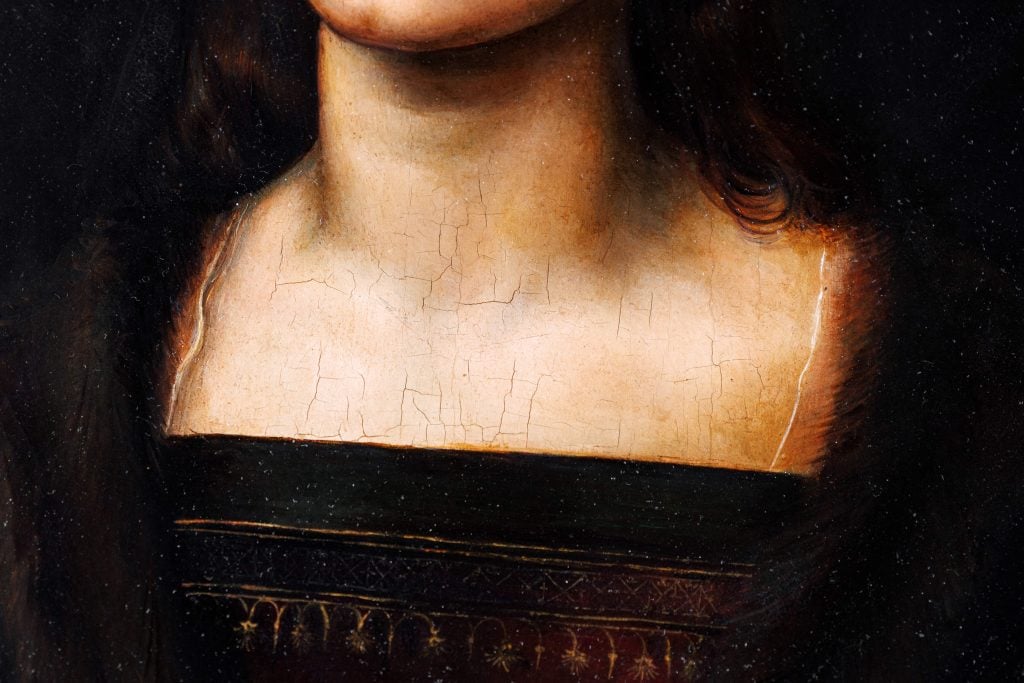
Detail of a portrait of Mary Magdalene attributed to Raphael. Photo: Geoffroy Van Der Hasselt / AFP via Getty Images.
In an interview with the World Art News, Di Maria pointed out that the inclusion of repentances—intentional alterations made during the creation of a work of art—helped to identify this work as an original. Repentances, she explained, would be left by artists to “distinguish them from copyists who lack such subtleties.”
In response to comments that the painting looks similar to Raphael’s self-portraits, she said: “This resemblance can be attributed to what we refer to as the painter’s pictorial DNA… The shared attributes between Mary Magdalene in this painting and Raphael’s self-portraits could be seen as a testament to the artist’s distinctive touch and his ability to imbue his subjects with a profound sense of beauty and grace.”
The attribution, however, was greeted by skepticism by some critics. Among them, art historian and Italy’s former undersecretary of culture Vittorio Sgarbi characterized the rediscovery as “a journalistic scoop, since it is based on the knowledge of a few as it is a work in a private collection.” In a September 2023 post, the Italian art outlet Finestre Sull’Arte deemed the painting a “replica” and called out the researchers who authenticated the painting as “unrelated to studies on Raphael and lacking scientific publications on the Renaissance master.”
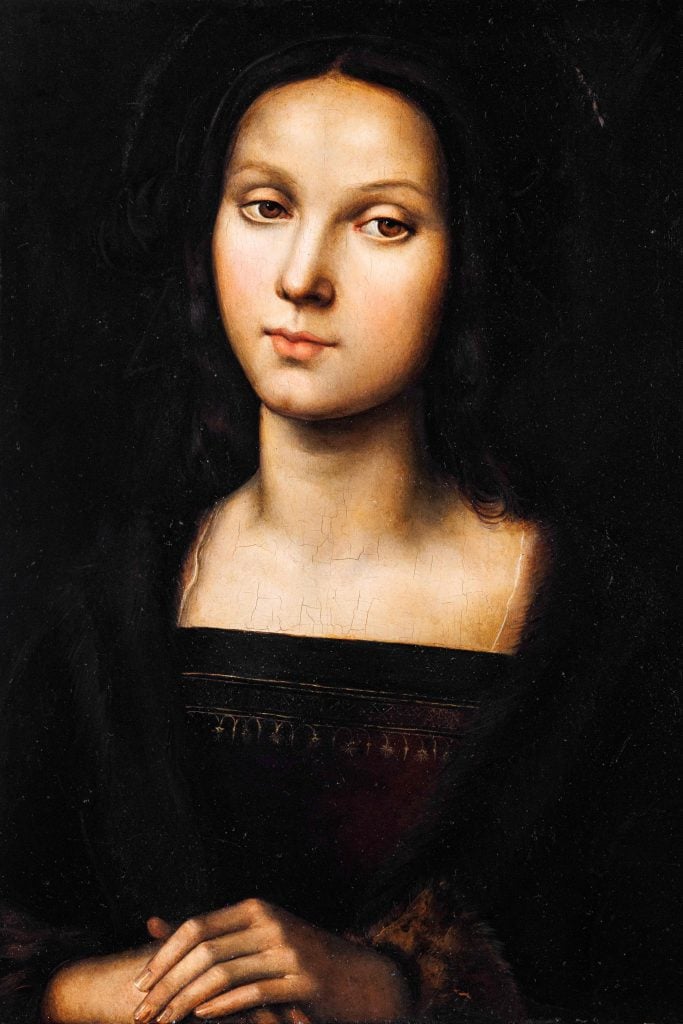
A portrait of Mary Magdalene attributed to Raphael. Photo: Geoffroy Van Der Hasselt / AFP via Getty Images.
The Saint-Maximin-la-Saint-Baume basilica is a fitting home for the portrait, as it is said to be where Mary Magdalene is buried. Mary Magdalene was a disciple of Jesus and the first person to witness the resurrection of Christ after his crucifixion. According to 13th-century lore, Magdalene lived in a cave in the Saint-Baume mountains, just 12 miles from the basilica, after converting local people in Marseille to Christianity. She is said to have then been buried in the Gallo-Roman crypt underneath the basilica, which was built between 1295 and 1532 and dedicated to Magdalene. A skull held in a golden reliquary inside the basilica is said to be the skeletal remains of Magdalene, and has made the basilica Christianity’s third most important tomb, and a significant place of pilgrimage.
On Sunday, visitors were charged a €3 ($3.20) entry fee to view the painting. The collected profit from viewing the portrait will be used to fund restoration works to the 13th-century basilica.
Follow Artnet News on Facebook:
Want to stay ahead of the art world? Subscribe to our newsletter to get the breaking news, eye-opening interviews, and incisive critical takes that drive the conversation forward.


